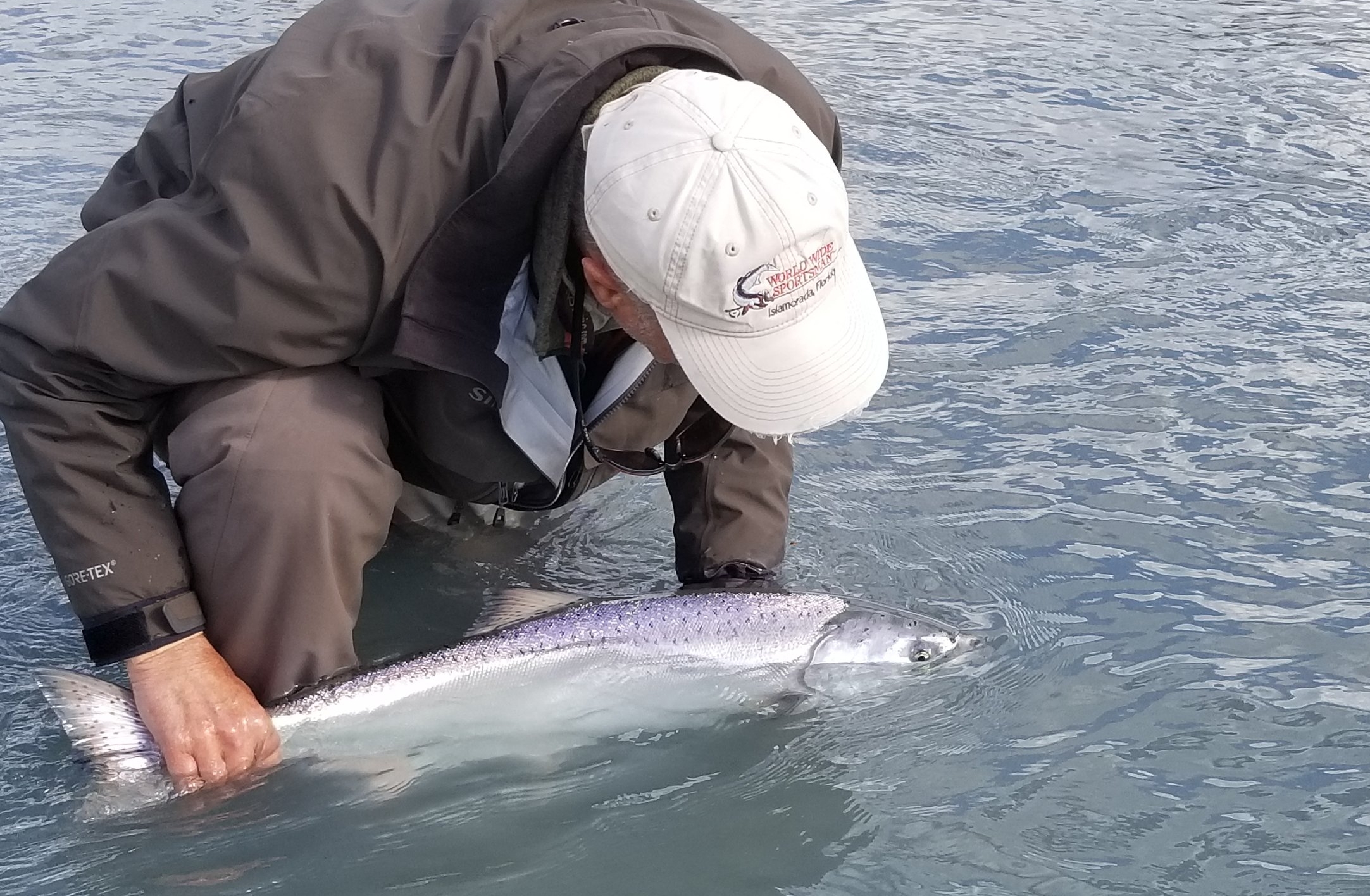Nothing gets fishing guides more excited than the build up to the early king season. The anticipation of the first runs down the river to test new gear and hope to run into one of the first Chinooks of the season can keep even the most even-keeled guide awake at night.
The coming of a new season also means a little self-evaluation about our individual impact on our fisheries. We all know what challenges salmon face and we each deal with those challenges in our own way.
Whether it is self-regulation about not harvesting big hens, using single hooks when we could use multiple hooks or making a conscious decisions about the days of the week we choose to fish, the way we approach the fishery is as unique as the kings we chase.
Much of the guiding I do for kings is with a fly rod; specifically, a 2-handed fly rod, also known as a spey rod. If I had my way, I would be out there every day swinging big flies for the king of fish. It is an age-old technique with a modern twist that is a challenging, yet rewarding way to pursue kings.
The growing popularity of spey rods is glaring in some respects. More and more people are taking to the method for both salmon and trout in Alaska. There’s no doubt you’ve been seeing the rhythmic, flowing casts of some skilled anglers launching nearly a hundred feet of fly line out to the middle of the river. The long, sometimes 14’ fly rods are hard to miss out there.
The methodical casting and calculated covering of water has some benefits that might not be as obvious to the casual onlooker. First, and foremost, the goal of using a spey rod to fish for kings is to cast large flies with heavy sinking lines (sink tips) to “swing” the fly down and across the river. Spey rods are also ideal for spots where you wouldn’t be able to back cast a normal single hand fly rod. Spey casting helps cover a large swath of the river. Once the swing is completed, the angler then takes a couple of steps downstream and repeats the process.
This method of swinging flies, when done correctly, ensures that much of the holding water kings are found in, will be sufficiently covered, giving the angler a reasonable feeling that they will show their fly to a lot of fish throughout the run.
Though spey casting appears to be difficult and technical, it can actually be very easy to learn and success catching king salmon on the fly is very possible. I’ve seen it time and time again. Most of the anglers I take spey fishing for king salmon have never picked up a fly rod, let alone a spey rod. On some of the most epic days out there, I have seen people hook a fish within minutes of their first attempts at casting. Even with minimal line out and not the most ideal swing, I have witnessed my clients hook and land multiple fish in a single day on a spey rod.
Spey casting is a great way to spend a day on the water. The technique allows you to escape into your own world, carefully working down the river seeking that elusive pull on the line. Though kings are considered the fish of 10,000 casts on a fly rod, the moment you tail your first on on the fly, you’ll quickly forget the 9,999 times your fly didn’t connect.




